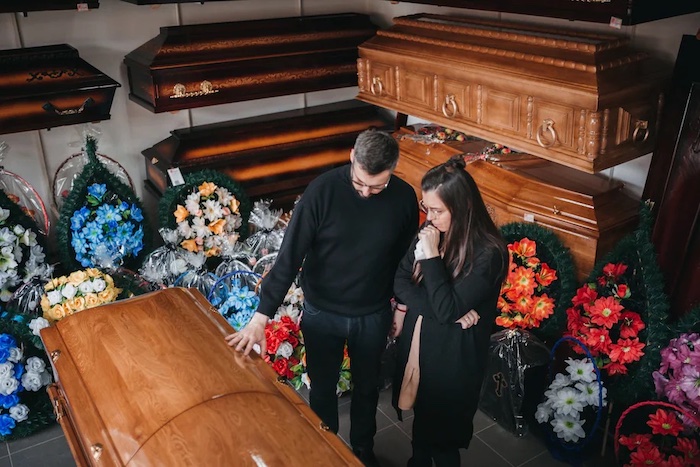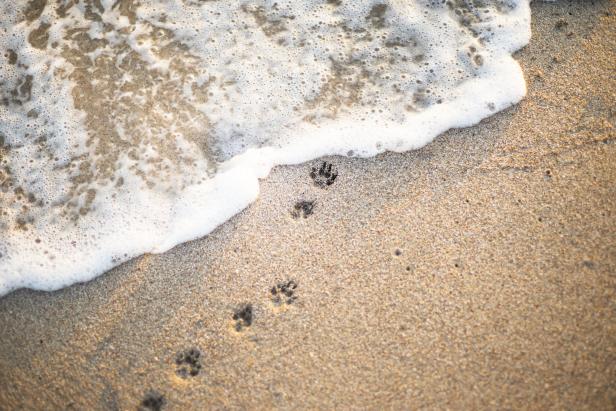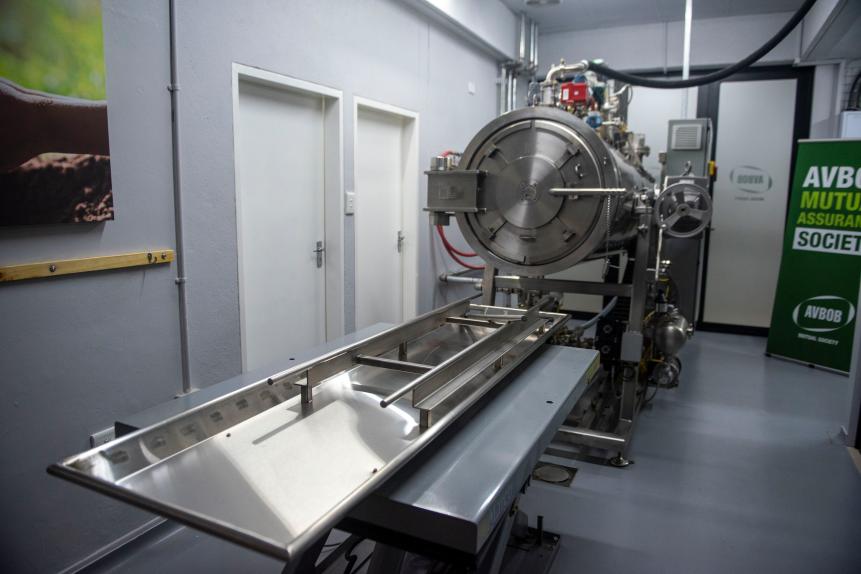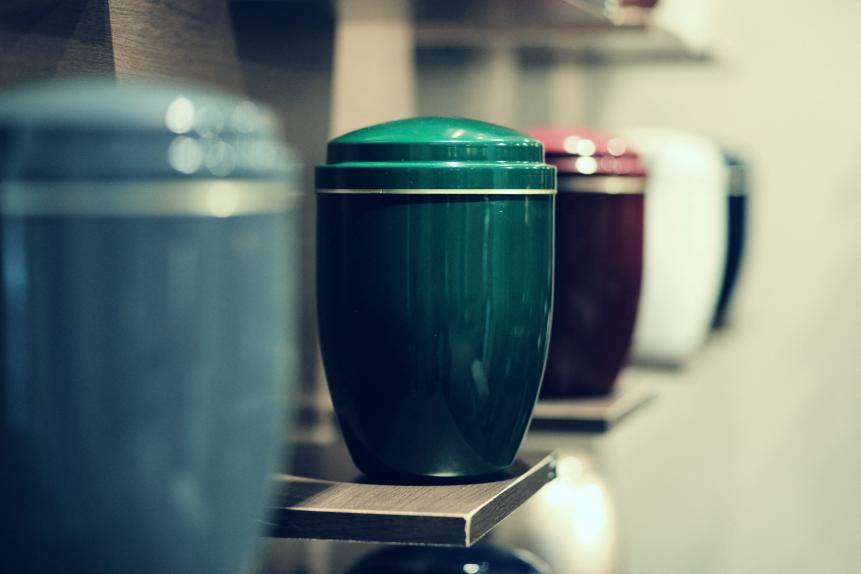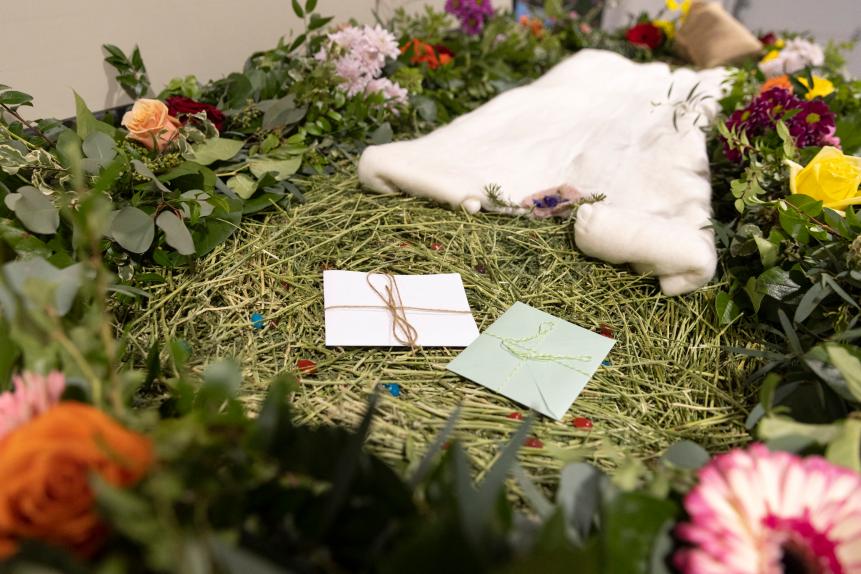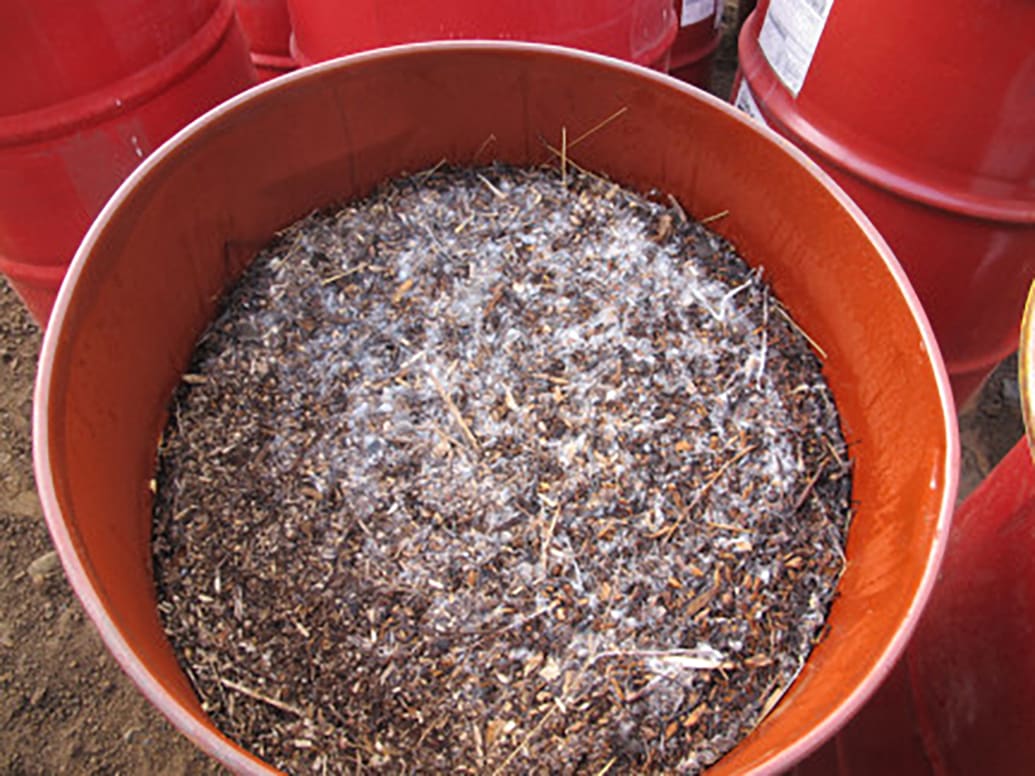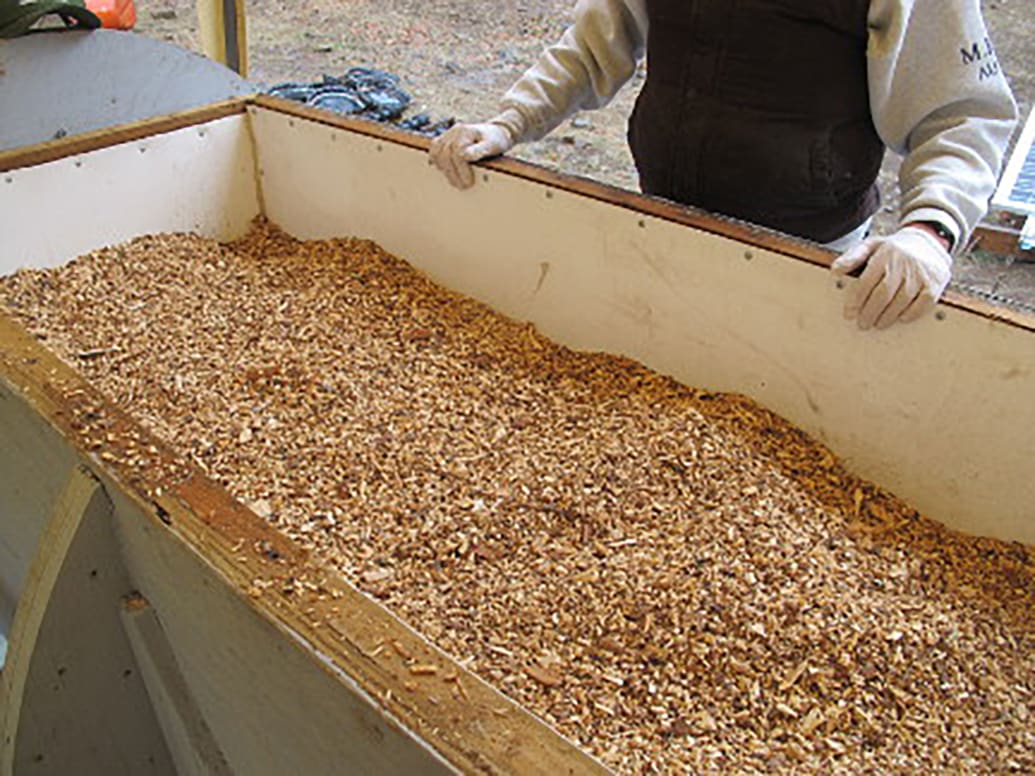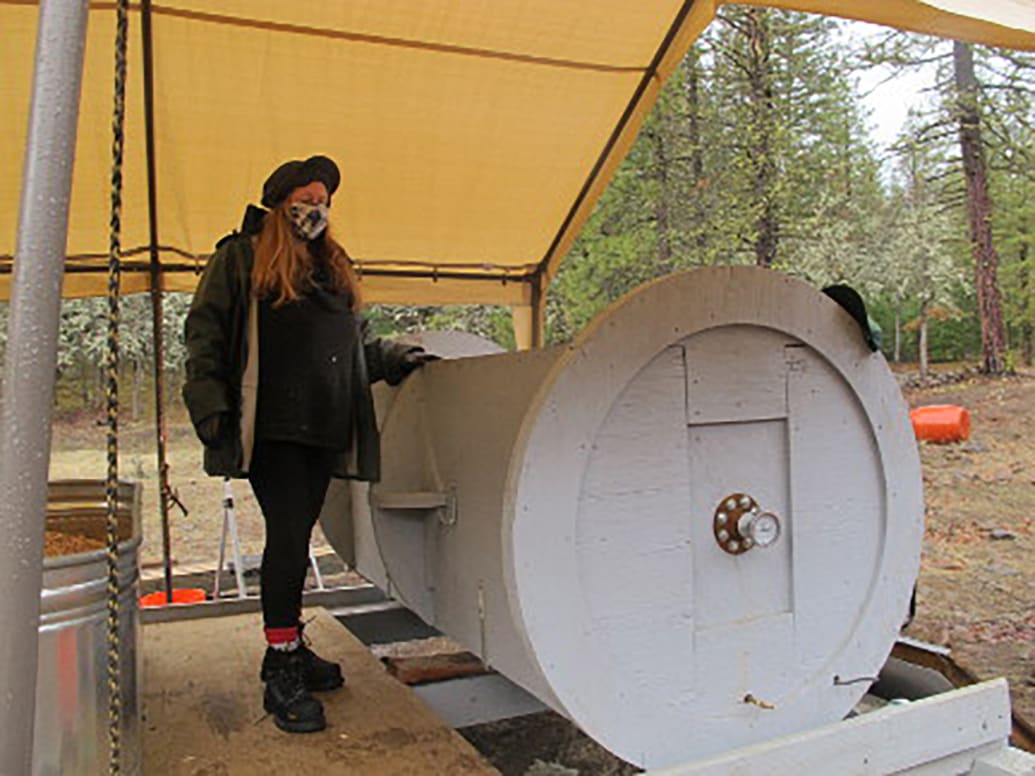
by Carson Kessler
For the funeral industry, the COVID-19 pandemic has meant flush times. Revenues have surged at Service Corporation International, the largest such chain in the U.S., with more than 1,500 funeral homes and 400 cemeteries. And “COVID impact,” according to a recent investor fact sheet, helped SCI more than double its earnings per share between 2019 and 2021.
Prices for funerals have always been steep. Funeral homes charged a median of $7,848 for a viewing and burial last year, according to the National Funeral Directors Association, and $6,970 for a cremation. Those costs don’t include the charges from cemeteries, which can add thousands more. ProPublica recently investigated one cemetery whose charges could run into the tens of thousands of dollars.
The federal government has done little to regulate the industry. Thirty-eight years ago, the Federal Trade Commission tiptoed into this realm, mandating that funeral homes disclose their prices. But cemeteries, some of which are overseen by states, were exempted from those rules. For two years now, the FTC has been conducting a rare review of its rules and examining a wide series of proposals, including extending its rules to cemeteries, requiring that prices be posted online, and disclosing that embalming is not legally required. Presented with a series of questions about the status and timing of the process, an FTC spokesperson would say only “the review is ongoing.”
Joshua Slocum, executive director of the Funeral Consumers Alliance, the only national consumer organization that monitors the funeral industry, has been advocating for changes to the FTC’s Funeral Rule for decades. Regardless of what the agency decides, Slocum wants consumers to know their rights, as well as have a few tips at their disposal when preparing to put a loved one to rest.
This conversation has been edited for length and clarity.
Many people might be surprised to know that at least part of the death industry is regulated. What is regulated and what isn’t?
Let’s talk about the federal [rules] because that’s most important to the basics of what people need to know. There’s something called the Funeral Rule, a regulation from the Federal Trade Commission, which gives consumers particular rights, and they would be very wise to exercise these rights.
One, they have a right to get price quotes by phone.
Number two, when they go to a funeral home in person to talk about a funeral arrangement, they have a right to a printed, itemized price list — think of it just like a menu at a restaurant.
Number three, they have a right to pick and choose item by item. Funeral homes are not allowed to offer you only a package. They will try to offer you a package and they will often say, “You save money if you buy everything together in a bundle.” But just like all bundles, you have to take a look and see, is this actually something I would have spent money on, on its own? Am I really saving money? Or am I just getting a bunch of things that I wouldn’t have picked anyway?
What are the first steps to take after a loved one’s death?
Number one, remember that death is not an emergency. When death occurs, by definition, that means the emergency is now over. The worst thing that can happen has already happened. The person isn’t going to get any deader, to put it plainly.
Get on the phone and call at least five different funeral homes within a 20- to 30-mile radius of where the dead person is. Get price quotes. Take the time to at least look it over and compare some of the prices before you commit to having the funeral home remove the body. If the person dies at a hospital, which is more common, you have more options. Ask the hospital if the body can stay in the morgue for a couple of days while you make a considered decision about which funeral home to call.
Two, take stock of your budget. You need to know that figure. Decide ahead of time what you can comfortably afford. And for God’s sake, please don’t do this: “Oh, money is no object. It’s my mother. She deserves the best,” and then three months from now, you’ve got a $15,000 bill that you can’t pay.
What happens when you comparison shop?
Anytime you pick five or six funeral homes, all within the same city or region, and you canvass them, you will find that there’s a price difference of thousands of dollars for exactly the same service all within a service area available to you. And you will not know this because the vast majority of people will say, “Oh, well, we just use our family’s funeral home.” And I will ask them, “Why is that the one you always go to?”
The bottom line is nobody has a family car dealer, nobody has a family utility company, nobody has a family anything else. They compare prices and services. The problem here is that because this is the death transaction, and it’s a transaction we’re only going to sign a check for on average once in our lives, we don’t have practice with it. And because it is the most emotional business transaction we will ever encounter, many make the mistake of thinking of the funeral home in the same emotional category that their church lives in. That’s a mistake. Your funeral home is not your minister. Your undertaker is not your counselor. Your undertaker is your car dealer for death. And I do not mean that in an insulting way. I mean it in a straightforward business way.
How did it come to be that funeral homes are governed by some federal regulation, but cemeteries aren’t?
The cemetery regulation is so poor that I consider it an unregulated industry, even if it is technically regulated under state law.
Cemeteries before the 20th century were never considered a capitalistic, profit-making venture. They were, either by law or by community consensus, conceived of as doing a public good, something closer to what the church does. So they were seen as nonprofit community service entities that weren’t subject to regular business regulation. That changed in the 20th century when it did become possible in many parts of the country to run a for-profit cemetery.
But the regulations never caught up. The same kinds of deceptive practices that were documented that led to the Funeral Rule have always been going on at cemeteries.
I think there’s very little chance that the FTC is going to bring cemeteries under the funeral rule this time around. We’ve tried many times. There are complicated reasons for it. One of the reasons is that many cemeteries in many states are organized under nonprofit corporation law. The FTC does not have jurisdiction over that, which is an actual genuine, systemic problem.
What kind of deceptive cemetery practices are you referring to?
The same things as what funeral homes did before the law changed. The FTC rule doesn’t apply to cemeteries, so they don’t have to give out a printed price list. They don’t have to let you pick a la carte. Many cemeteries get up to nonsense games, like if you don’t want to buy that cemetery’s headstone, they get sore that they’re not getting that profit out of you. So if you go to a third-party monument dealer, the cemetery will tack on what they will call an “inspection fee” that just happens to be the exact difference in cost that they lost if you didn’t buy their stone.
What has changed now for the FTC to consider amending the Funeral Rule and what needs to happen for some of these proposals to be implemented?
Well, the FTC needs to act. It’s been two years since the FTC announced that they were reviewing the rule, and a review means considering changes. I don’t have a lot of inside knowledge, but what I can say is in communicating with the staff, I believe that they are taking this issue seriously. I believe that they are seriously considering updating the rule to mandate online pricing for funeral homes.
The current federal regulations entitle you to a paper price list if you show up in person at the funeral home. We believe that funeral homes should have to post their prices on their website. But until they do, you are probably going to have to telephone shop.
Do many funeral homes post their prices online, even though it’s not legally required at this point?
We, the Funeral Consumers Alliance and our partner organization, Consumer Federation of America, have done two surveys on the rate of online price posting. We did one in 2018, sampling 25 cities. We found only 16% of funeral homes posted their price lists online. We just did a new version of the survey, which was greatly expanded to a sample size of 1,046 funeral homes in 35 different states, and we only found 18% of them posting their prices. So no, most funeral homes hide their prices online.
Do you think the industry’s profits from COVID-19 will affect the FTC’s decision?
I think our perception and reaction to COVID has played roles in most things. One of the things that was really unfortunate for funeral consumers is that COVID was exactly the period when an online price list would have been most helpful to grieving families and we didn’t have it. People were afraid to go into businesses in person, or there were actually state-based restrictions about transacting business in person. So a lot of people were making arrangements over the phone or in some long-distance way.
The big corporations, which own hundreds of funeral homes and cemeteries across the country, are opposing changes to the rule — what’s their stated reason? What’s your take?
Things like, “We believe that this is a very personal transaction, and we believe it’s most appropriate for the price discussion to be had in the traditional manner, and consumers aren’t shopping for price anyway, so there’s no need for this.” That’s what they say. It’s not complicated. It’s simply that they don’t want to be regulated. From my point of view, they have a very weak case. First of all, requiring online posting of price lists literally costs the funeral industry $0. Do you know what it costs them? It costs them the time it takes to click that button that says “upload PDF.”
ProPublica asked SCI to comment on the FTC’s rules and Slocum’s characterizations of the company’s position. In a statement, an SCI spokesperson acknowledged that “we oppose additional federal regulations.” The company asserted that “the Funeral Rule has worked well at the federal level” and that “our industry is primarily regulated at the state level, and additional regulation at the federal level is unnecessary.” It emphasized the importance of “having a personal conversation with a licensed funeral director, who acts as the consumer advocate” and said that its research shows consumers believe “price is the least important consideration when comparing service quality, reputation, convenience of location and price.” It also stated that SCI’s pricing is “competitive and reasonable.”
Asked about its profits, SCI said, “As the largest provider of funeral, cemetery and cremation services in North America, we served many families who lost loved ones in the pandemic. The growth was driven by elevated COVID-19 mortality, which resulted in an increase in both funeral services performed and burials in our cemeteries.” The statement added that “we had to scale to serve our communities, often when other funeral homes were overwhelmed and simply could not do so.”
More broadly, how have multibillion-dollar conglomerates like SCI changed the funeral industry?
Here’s the reality: They still only have about 12% of the funeral homes in this country. And that’s been pretty steady over 20 to 30 years. In some cities, places like Seattle, many cities in Florida, where there’s a heavy concentration of elderly people, then SCI has a much greater percentage of the market share. That is true. In those places, SCI particularly tends to be the highest-priced funeral home in any market. So if it matters to you, find out who owns your local funeral home. Just because it still says McGillicuddy on the sign doesn’t mean Mr. McGillicuddy still owns it.
Are there practical things that consumers can do to bring the cost of a funeral down?
The most cost-effective thing is to choose a funeral home that already has reasonable prices. Your choice of funeral home is the No. 1 driver of cost. Once you choose a funeral home, look carefully at their offerings and see how much of it you can afford that’s within your budget. Remember that you can shop a la carte. So if your budget says $2,000, you need to face reality. $2,000 is not going to buy you a traditional funeral with embalming, public viewing of the body, metal casket, graveyard burial. You are not going to get that for $2,000 anywhere in the United States. That means your choice is going to be something like simple cremation, even if that’s not your favorite. People have to be realistic.
Is price negotiation ever an option? How would that work?
Yes, just the same way you would do it with any other business that you were negotiating with. They don’t have to haggle with you, but you have the right to do so. We get people who are like, “Well, the funeral home has already picked up the body and we do like this funeral home, but they’re more expensive than another one we found in town, we simply can’t afford it.” And my suggestion is talk to the funeral director and say, “Listen, you’ve taken good care of us before, we appreciate that you came to pick our grandmother up, but we literally cannot afford your price on this direct burial. We would love to give you our business. Can you meet your competitor’s price? We realize you don’t have to lower your prices. But we would like to do business with you. If you can’t lower your prices, we’ll have to have her body removed to a different place.”
And that’s OK to do?
Well, why wouldn’t it be OK? Here’s what I hear underneath this, and I think you’re channeling it correctly from people: What people are doing is asking for permission. But you’re not breaking a social rule. You’re not being cheap. I know what people are thinking: “I don’t want to do that. It’s gauche. It means I don’t care about my mother.” Stop that. That’s nonsense talk. If you showed how much you loved your mother by how much you spent on her funeral, you’d go bankrupt. Love cannot be expressed by money.
Lastly, what are some of the biggest misconceptions about navigating this process?
Most of what people think they are required to purchase is not true. For example, many people think embalming is legally required if you’re going to view the body. That is not true in any U.S. state. It’s also not true that embalming is required as a condition of being buried in the ground. These are in-house funeral home policies, not laws. So there’s very little that you are legally required to purchase. Basically, the only thing that has to happen, when a person dies, in order to satisfy the laws, there has to be a death certificate signed by a doctor, the body has to be buried, cremated or donated to anatomical science within a certain period of time, and that’s literally all that is required. Everything else is optional.
Go into this transaction knowing that although it’s emotional, you are a consumer, you get to decide what you put in your cart. You’re not obliged to buy these things. These are choices and you should make choices that fit your family’s budget and your family’s emotional preferences.
Complete Article ↪HERE↩!
